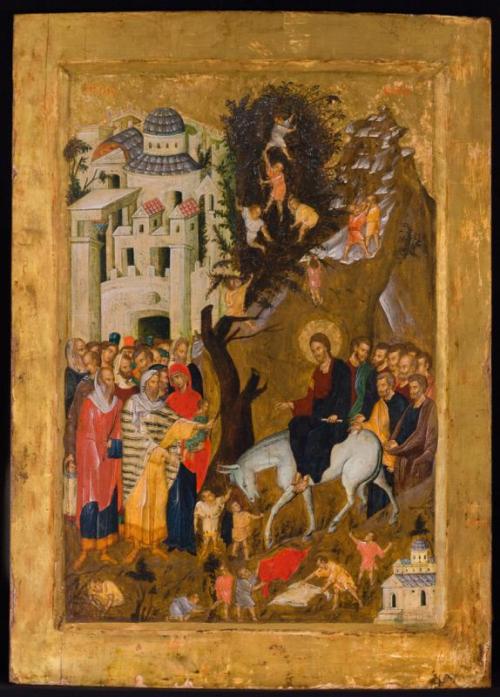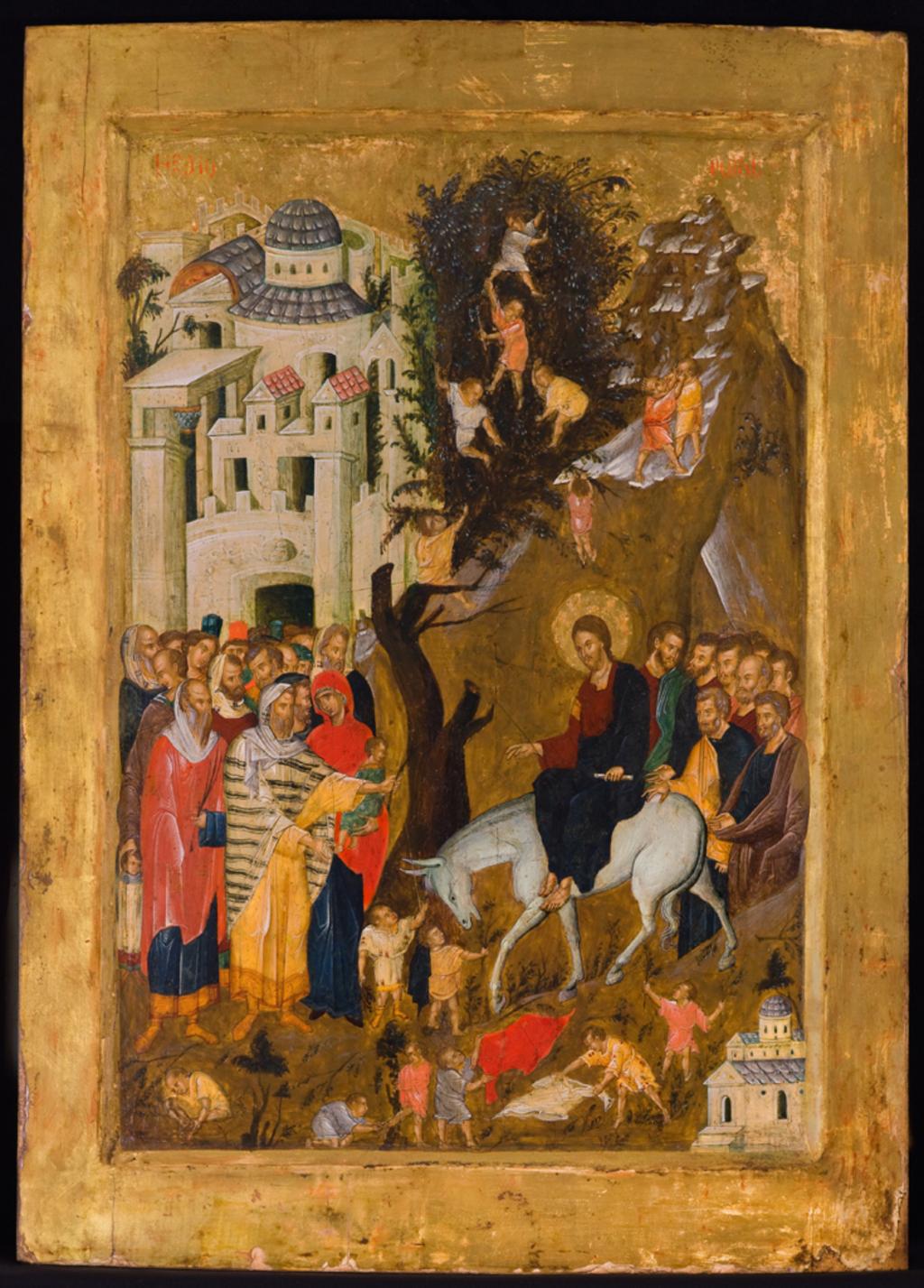
Entry into Jerusalem
Date: early to mid 15th century
Translated Inscription:Inscribed: The Entry into Jerusalem
Period: Byzantine
Public Geography:Turkey, possibly Istanbul (Constantinople)
Medium: Tempera and gold leaf on canvas mounted on wood
Dimensions:
19 1/4 × 14 × 3/4 in. (48.9 × 35.6 × 1.9 cm)
Classification: Painting
Credit Line: Tenth anniversary purchase, with funds provided by The Brown Foundation, Inc.; The Wortham Foundation, Inc.; Mr. and Mrs. James Elkins, Jr.; Shell Oil Company; and Houston Endowment Inc.
Object number: 1997-16 DJ
Not on view
DescriptionA vertical piece framed in gold. The top left of the scene depicted shows a white building city, with a gate and various sizes and types of buildings. To the right of the city is a tree, which splits the piece in two. In the leaves of the tree are shown figures climbing. To the right of the tree is a mountain, with more figures attempting to traverse it. Below the city is a crowd of people wearing head coverings, robes, and tunics The front most figure reaches out towards the man on the right, who is approaching the city on a white donkey and has a golden halo around his head. Behind the man comes a group of men. Below and in front of the donkey are more figures like the ones in the tree; smaller than the rest of the men shown. In the lower right-hand corner is a small temple-like structure.
EssayThe Menil Collection acquired this icon depicting Christ’s Entry into Jerusalem in 1997 to commemorate both the museum’s 10th anniversary and Dominique de Menil’s 89th birthday. The columns and gables of the city, the bust over its gate, and the postures of the individuals who greet Christ as he rides into Jerusalem are all elements drawn from classical Greek art and designed to appeal to educated Byzantines. The icon was painted in the years preceding the fall of Byzantine Empire to the Ottomans in 1453, a period that was economically devastating to Constantinople. Despite the loss of wealth and power in the region, art production, as demonstrated by this icon, remained high in quality and responsive to both European and domestic developments. Historians have noted that merchant vessels sailing from Constantinople to Western Europe regularly carried panel paintings among their cargo, indicating that artists were producing for an international market.
Public Website: Yes
In Collection(s)
Exhibitions:
- Byzantine Things in the World
- Imprinting the Divine: Byzantine & Russian Icons from The Menil Collection
- Thirty Works for Thirty Years

